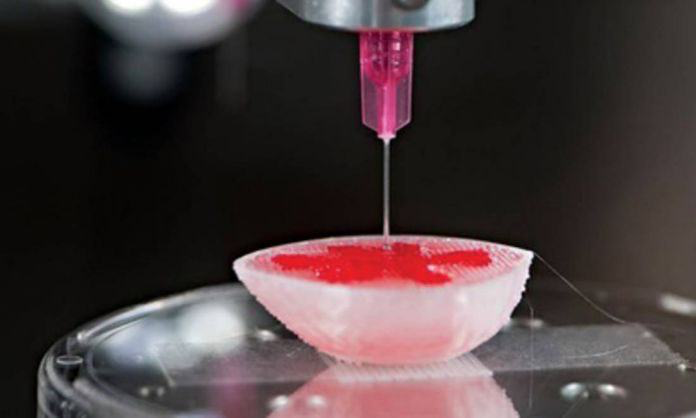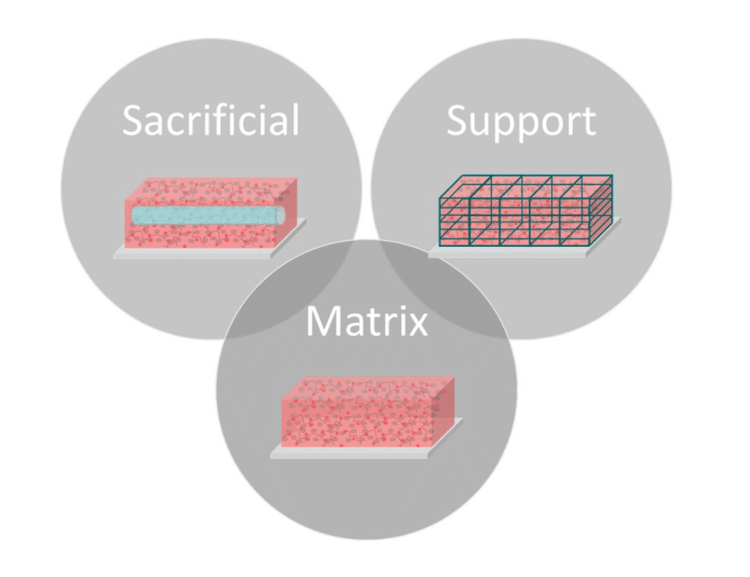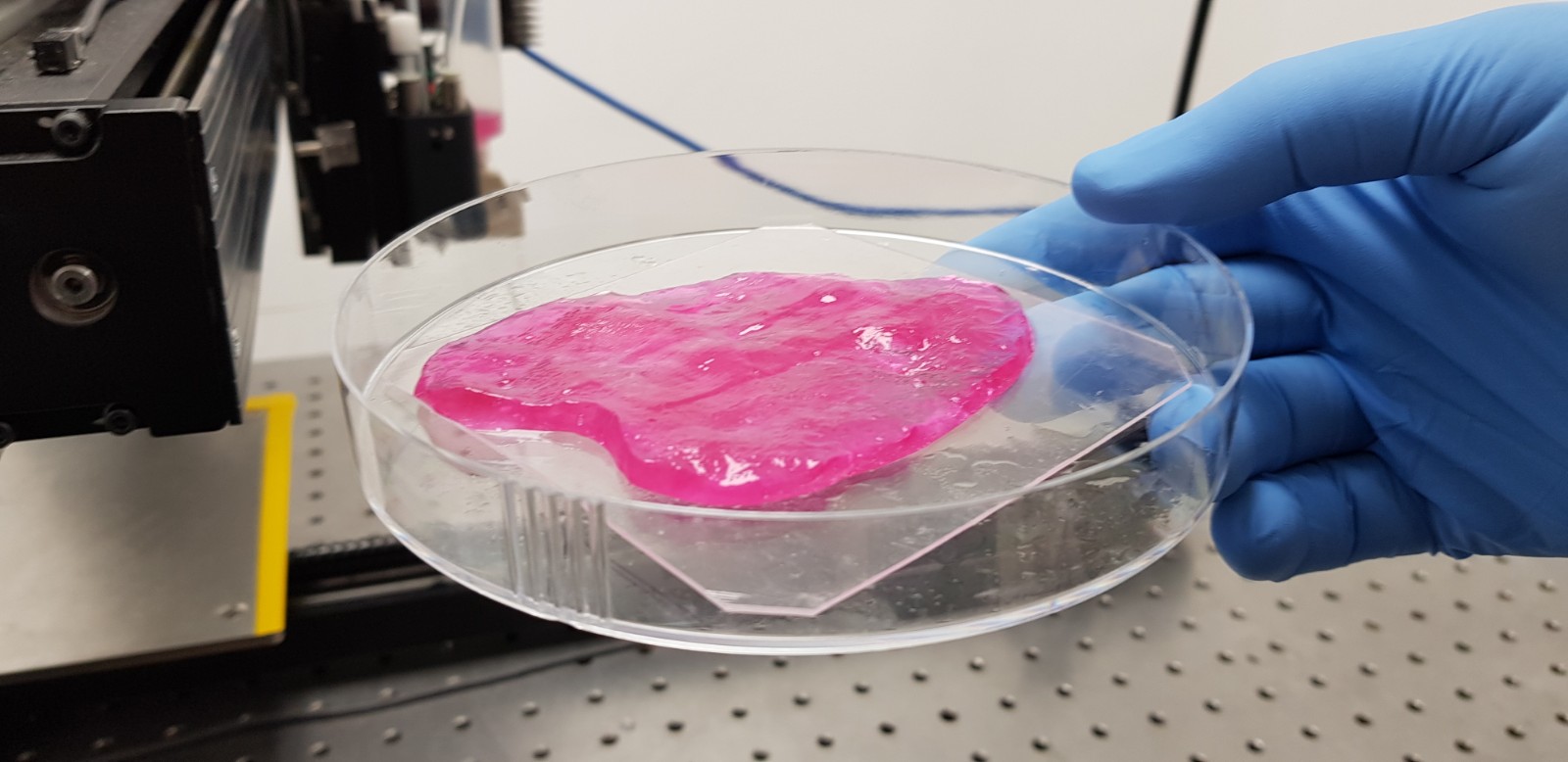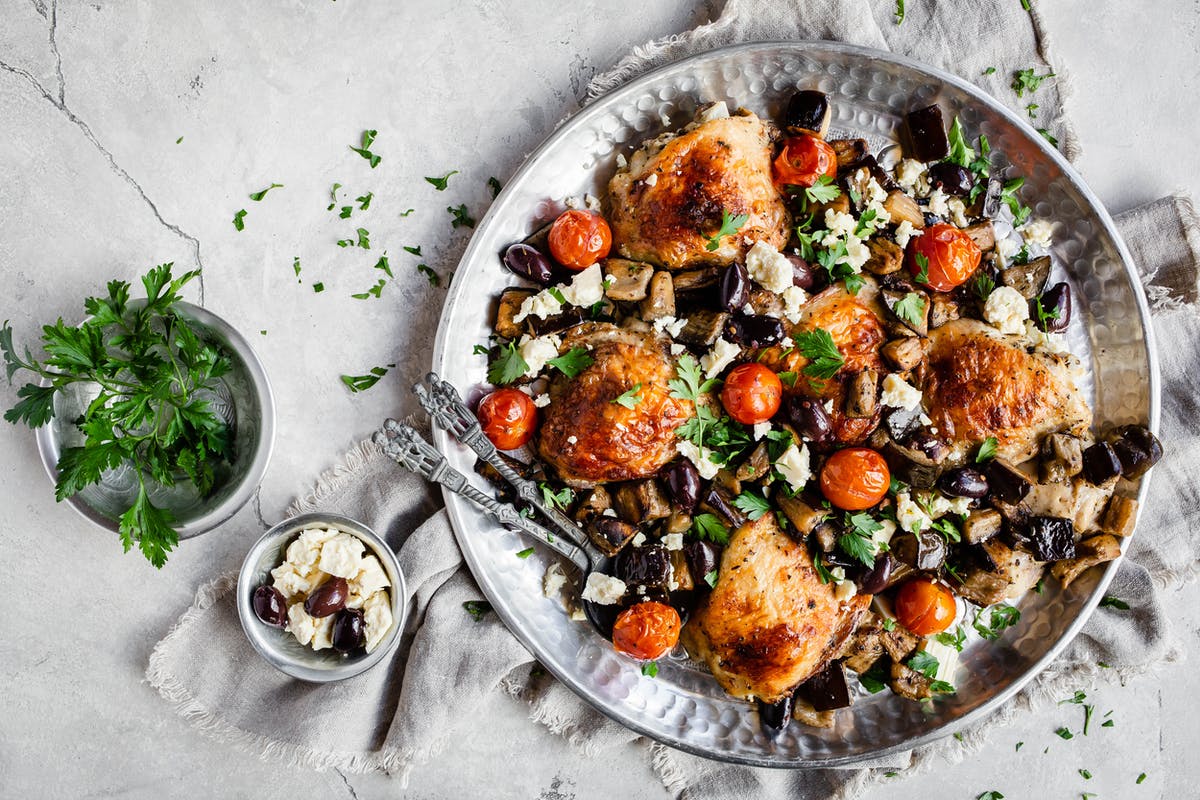MeatTech3d, whose head of business development Simon Fried was recently interviewed, has made huge strides within the cellular agriculture industry through its 3D-printed clean meat prototypes, such as the recently accomplished cruelty-free carpaccio. We have all heard of this phenomenon and seen pictures of the thinly sliced meat sitting in a petri dish, but how is it actually made?
MeaTech’s production uses 3D printing to achieve the texture, appearance, and taste of meat. Although their Project Carpaccio is a proof of concept, they are still seemingly far from fully printed steaks. 3D bioprinting is one application of additive manufacturing, a revolutionary technology from the 2000s. Whereas most traditional manufacturing techniques, known as subtractive manufacturing, remove material to create the final product, additive manufacturing converts a digital model into a solid 3D object.
What is 3D bioprinting?
3D bioprinting uses cells and other biomaterials to print living structures. It allows for the creation of patterns of cells, biomolecules, and other biomaterials. This method of creating meat products allows researchers to control variables in the cellular environment and the object’s macroscopic geometry. The microenvironment that is created allows for more cell-to-cell interaction and mimics the natural conditions inside animal bodies. The process constructs layers that mimic the natural organization in living things and organizes nanofibers into a directionality similar to that of muscle tissue.
As with other additive manufacturing techniques, bioprinting begins with a model of the final structure. This can be created via a computer-aided design (CAD) program or obtained through an MRI or CT scan. The file is then analyzed to create a series of thin layers that will stack to form the final geometry. Once the file is sent to the bioprinter, the bioprinter follows its instructions, adjusting the temperature of extruders, the extrusion pressure, the bedplate temperature, the crosslinking intensity and frequency, and the 3D path. The final 3D-printed tissue is made of bioinks containing cells or bioinks without cells. The latter serve as scaffolds that can be seeded with cells after printing.

What are bioinks?
Bioinks are natural or synthetic biomaterials that mimic an animal’s extracellular matrix (ECM) and support cell adhesion, proliferation, and differentiation. These bioinks contain the necessary components for cells to grow, live, and create functional organ tissues. The most effective results are achieved when cells are encapsulated in bioinks containing native ECM components. There are different types of bioinks with various properties depending on the type of cells being used and the type of organ tissue being created. There are three primary types of bioinks: matrix bioinks, support bioinks, and sacrificial bioinks.

Matrix Bioinks
These bioinks are primarily composed of water and are therefore also referred to as hydrogels. They are used to hold and support cells. Some examples of matrix bioinks are alginate, collagen, or modified versions of hyaluronic acid.
Support Bioinks
These bioinks provide more stable mechanical properties than matrix bioinks. They have the ability to reinforce constructs since hydrogels can lack the necessary structural integrity. These are most commonly used for connective or hard tissues (bones, cartilage, etc.)
Sacrificial Bioinks
These bioinks are designed to provide temporary support and be removed in post-processing. They are important for the creation of negative spaces and filling empty spaces. They are most commonly used in vascular networks, such as blood vessels.
What are the steps for 3D bioprinting meat?
1. Cells
The first step is to choose the proper cell type or cell line. MeaTech3d obtains a sample of stem cells from a cow’s umbilical cord. These stem cells are then left to proliferate and differentiate into different cell types in a bioreactor. The muscle cells and fat cells are extracted and separated for use in the bioprinter.
2. Bioink
Next, a compatible bioink needs to be chosen. MeaTech3d has formulated their own bioinks, which are edible and suitable for various cell types. Generally, a native bioink such as a collagen-based hydrogel can be useful because it contains native proteins. However, using an alginate bioink can be more cost-effective and sustainable. The cells can be mixed into the bioink so that they will more closely resemble living tissue.
3. Crosslinking
Crosslinking is a process that changes the interactions among molecules in the soft 3D printed tissue and cause it to stiffen and retain structural integrity. This can be done through photo-crosslinking if photo-sensitive bioinks are being used. It can also be done by changing the temperature to initiate thermal crosslinking or through the addition of chemical enzymes that initiate crosslinking.
4. Setting up bioprinter
There are different types of 3D bioprinters available. MeaTech3d uses a modified version of a bio magnetic bioprinter, which has a higher throughput than other bioprinters and allows for more precise spatial control. MeaTech3d also uses specially designed bioprinter heads and nozzles (patent-pending) for edible tissue production. Once the printer is set up, the bioinks are loaded into the print nozzle. The bioprinter can then begin printing layer by layer according to the file instructions. After the tissue is finished printing, it is placed in a growth medium to grow and mature.
Conclusion
MeaTech has made huge advances in this field and moved ahead of other companies in the bioprinting space. Another benefit of 3D printing is the ability to combine different cell types and integrate fat cells into muscle tissue, which is one of the unsolved problems in the cell ag industry. While bioprinting is a promising technique for the cellular agriculture industry, there are still many impediments that need to be addressed, such as regulatory approval, scalability, and cost. As the industry grows, this technique will be improved and made more efficient, opening the way to real clean meat.
References
3D Bioprinting - OpenWetWare.
https://openwetware.org/wiki/3D_Bioprinting#Microextrusion_Bioprinter. Accessed 22 Feb. 2021.
“Bioprinting 101: Learn How to 3D Bioprint | Support.” Allevi, 15 Jan. 2020,
https://www.allevi3d.com/bioprinting-101/.
Bioprinting 101: Part 5 - Bioink - 3DPrint.Com | The Voice of 3D Printing / Additive
Manufacturing. https://3dprint.com/236067/bioprinting-101-part-5-bioink/. Accessed 22 Feb. 2021.
“Cells and Bioinks.” Allevi, https://www.allevi3d.com/cells-bioinks/. Accessed 22 Feb. 2021.
Cells Behave Differently in a 3D Environment | Biogelx.
https://www.biogelx.com/cells-behave-differently-in-a-3d-environment/. Accessed 22 Feb. 2021.
Datta, Pallab, et al. “Essential Steps in Bioprinting: From Pre- to Post-Bioprinting.”
Biotechnology Advances, vol. 36, no. 5, Sept. 2018, pp. 1481–504.
ScienceDirect, doi:10.1016/j.biotechadv.2018.06.003.
eTeknix.com. “Scientists Work Out How To 3D Print Vascular Networks.”
ETeknix, 1 July 2014, https://www.eteknix.com/scientists-work-out-how-to-3d-print-vascular-networks/.
How It Works? http://3dbioprinting.weebly.com/how-it-works.html. Accessed 22 Feb. 2021.
“Israeli 3D Printing Startup Prints Meat Tissue From Stem Cells.” NoCamels, 17 Aug. 2020,
https://nocamels.com/2020/08/meat-tech-3d-printing-stem-cells-cultured-bioprinting/.
“Isreali Startup MeaTech Prints Carpaccio-like Meat.” The Spoon, 19 Aug. 2020,
https://thespoon.tech/isreali-startup-meatech-prints-carpaccio-like-meat/.
“Project Carpaccio: MeaTech Makes Real 3D Printed Meat.” 3DPrint.Com | The Voice of 3D Printing
/ Additive Manufacturing, 19 Aug. 2020, https://3dprint.com/271929/project-carpaccio-meatech-ltd-3d-printing-real-meat/.
“What Is 3D Bioprinting? | Bioprinting Explained.” Allevi, 2 Aug. 2014,
https://www.allevi3d.com/what-is-3d-bioprinting/.


 Human cultured-meat and the perfect steak - an interview with Simon Fried of MeaTech3d
Human cultured-meat and the perfect steak - an interview with Simon Fried of MeaTech3d